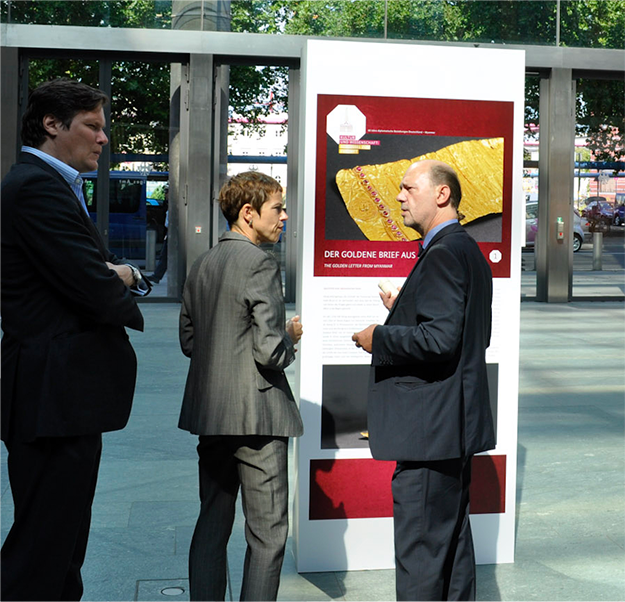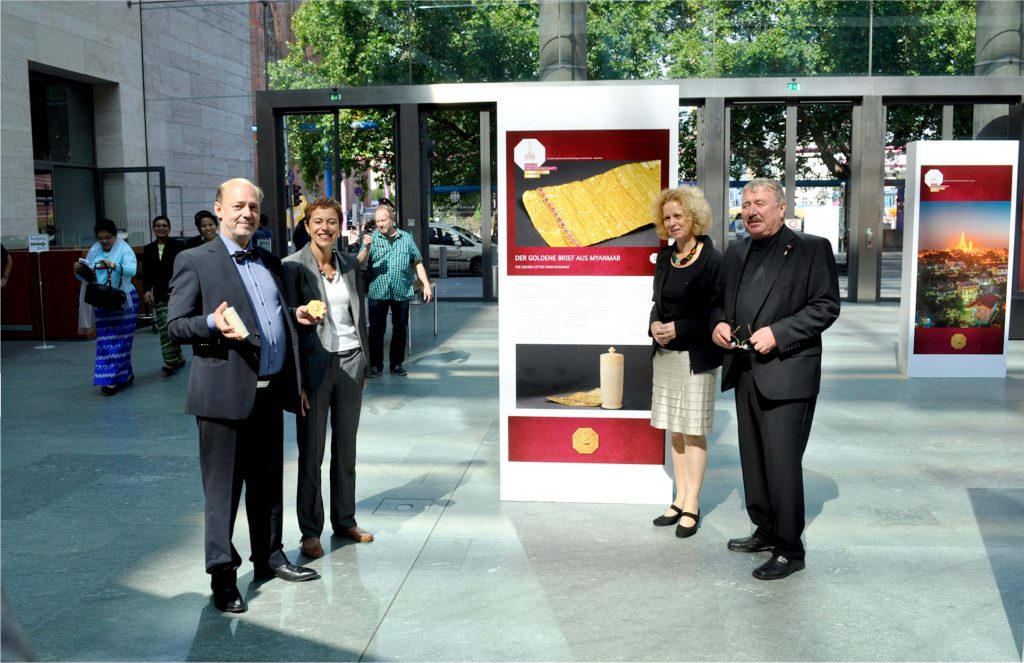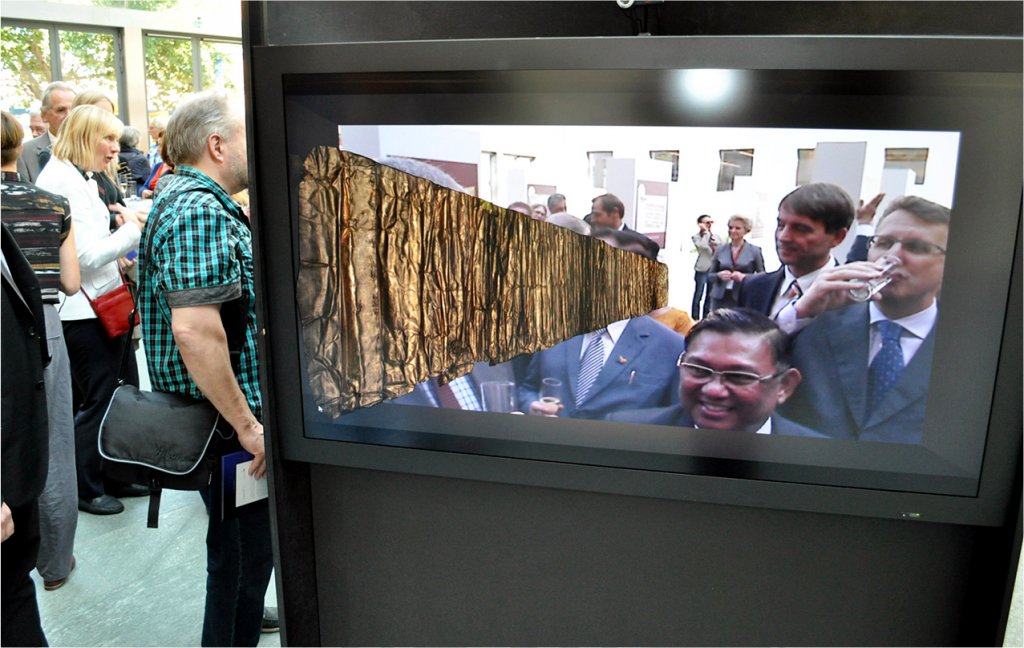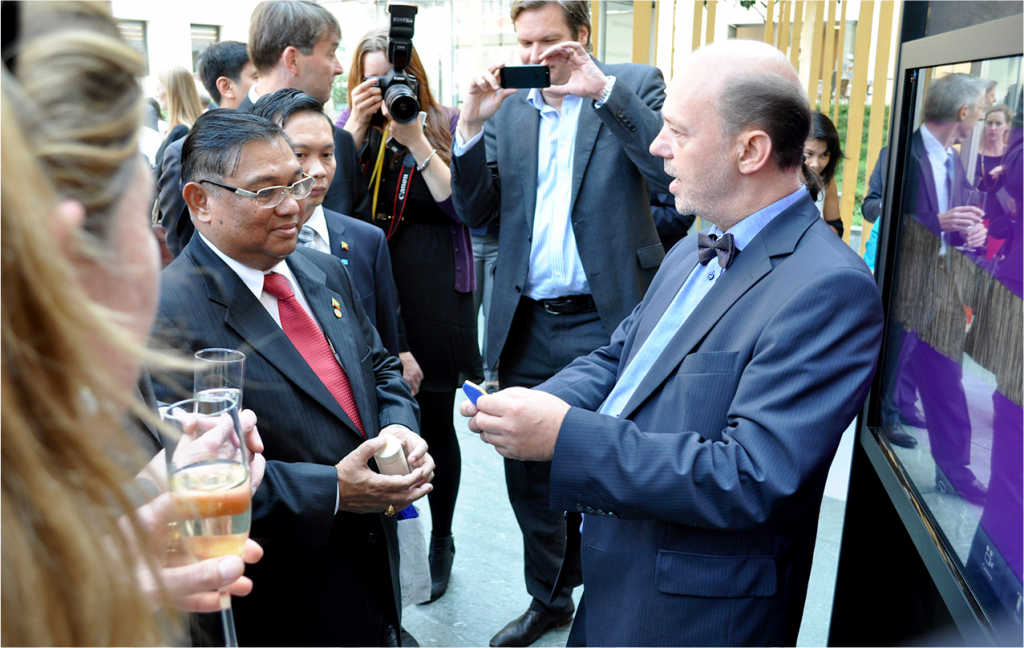Historical background

Best Cases

Historical background
In 1756, King Alaungphaya of Birma wrote a letter on solid gold, decorated with 24 rubies. This golden letter was sent to King George II. King Alaungphaya authorized establishing a secured base for ships of the East India Company on Birma’s coast.
The letter, which arrived in London in 1758, after almost two years’ journey, remained unanswered. This failure to deal with the offer of the Burmese king led to the fact that he ultimately destroyed the only existing English trading outpost. Thus the relations between England and Burma were interrupted for decades.
The letter was secured in Hanover’s Gottfried Wilhelm Leibniz Library over centuries and merely forgotten. Dr. Jacques Leider of l’École Française d’Extrême Orient lately identified the letter being the only one of its kind worldwide.
In 2009 UNESCO included the Golden Letter in their global register “Memory of the World” pursuing the issues of the world’s documentary heritage.
Project
In close cooperation with the Federal Foreign Office and Gottfried Wilhelm Leibniz Library we digitized the Golden Letter in 3D. This is supposed to support the intercultural exchange of Germany and Myanmar and to establish a modern cultural bridge in between both countries.
Besides the 3D scan, especially the scientific matters were highly interesting for us. We would like to express our heartfelt thanks to Dr. Reinhard Laube and his colleagues of Gottfried Wilhelm Leibniz Library for the support of this project. Also we want to express our thanks to the Federal Foreign Office.














